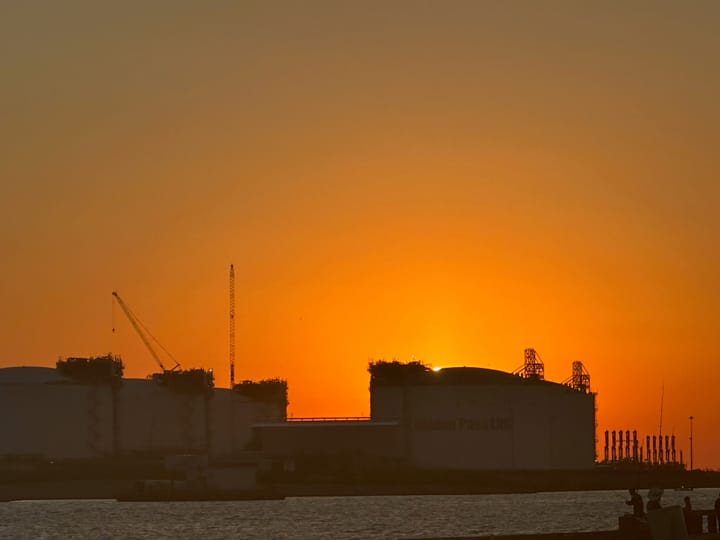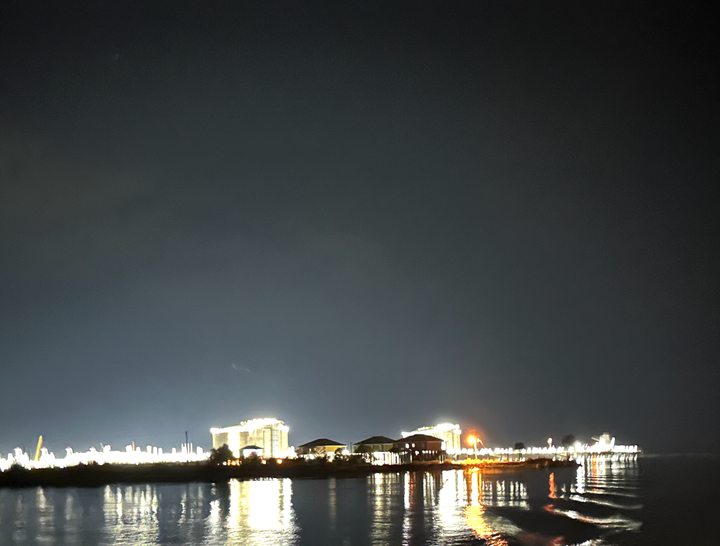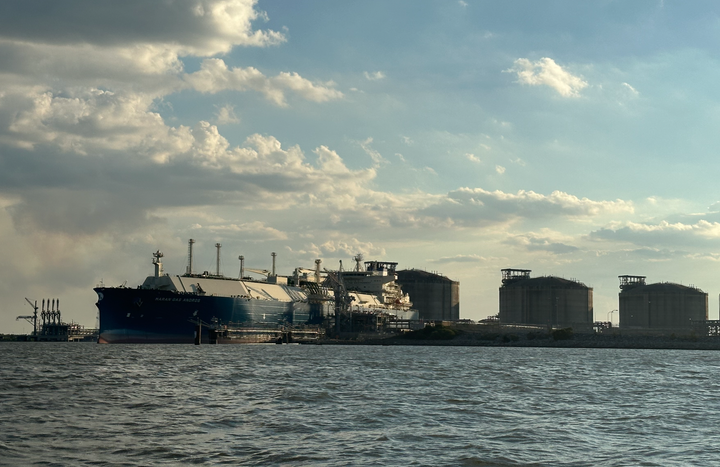LNG: The India Question

The global LNG industry has an economics problem. The main use for LNG (liquefied natural gas) is to burn it to generate electricity. However, there are lots of ways to make electricity these days and importing LNG to then burn it to power gas turbines is currently one of the most expensive. And while we know the industry doesn’t care about it, LNG is also one of the dirtiest fuels from an emissions standpoint. It is a climate killer.
So, on the surface LNG doesn’t have a lot going for it if you aren’t an oil and gas executive. Which is why efforts to tout the initial public offering of a leading LNG exporter in the U.S. flopped badly this year as reality creeped in. It’s also why we haven’t heard about any new LNG facilities being funded and moving forward in the U.S. despite the Trump admin handing out LNG export permits like candy. As I’ve been saying for a while, there is a real LNG pause and it is based on economics.
China was supposed to be where the LNG growth was for the industry but that isn’t happening. So now we are told India will drive the demand for the huge amount of LNG export capacity about to come on the market in the next 5 years. Seems reasonable on the surface and it is what Shell and the International Energy Agency are both saying is going to happen.
However, I’ve learned that treating industry press releases as fact-based documents is not a solid way to analyze investment opportunities. Sometimes it’s good to do your own research. Read some things. So I did. And based on what I’ve read, I’d say the predictions for LNG growth in India are delusional.
Indian Industry Insiders Have Some Thoughts
This line in a recent Gas Outlook article caught my attention.
“Market insiders said both the Indian companies had moved to export RLNG to Bangladesh having noticed the sluggish LNG consumption in their country over the past several years.”
Wait, what?! India is going to import expensive LNG, regasify it, build a pipeline and then sell it to Bangladesh? That is one expensive business model which seems crazy. As Gas Outlook notes, it is and the deal is off. But did you see the other part about market insiders in India noticing sluggish LNG consumption in their country over the past several years? What could be the problem?
“The fertiliser sector is the largest user of gas. Since fertiliser is subsidised by the government, fertiliser makers can use expensive imported liquefied natural gas (LNG) in large quantities. Other industries reduce their gas consumption and switch to liquid fuels like propane and fuel oil when international LNG prices are high.”
Those pesky economics. It seems that without subsidies, LNG can’t compete for power generation in India. But we knew that. How? Reading what people in India say.
"LNG prices need to more than halve to become affordable for India's power sector and help drive demand growth, Sandeep Jain, exec chairman of Indian Oil Corp's said."
The thing is that if LNG prices are cut in half, no U.S. LNG exporter can survive. Did Shell consider these dynamics? Even Reuters is now correctly questioning their math and notes the “volume vs price conundrum.”
“If demand is going to rise as strongly as Shell expects, it's likely the price of LNG will have to remain competitive against alternatives, especially in Asia, the top-importing continent and a key driver of the bullish demand forecasts.
However, if LNG prices are going to remain affordable on a relative basis to coal and renewable energies, then LNG producers will find it harder to secure the massive capital needed to fund the huge expansion needed.”
That is a conundrum. But Reuters has the solution.
“LNG companies will also have to invest massive amounts of capital and at the same time be prepared to accept weaker prices for their new production.”
The problem with this plan is evident as U.S. LNG producers are actively trying to renegotiate their contracts higher. Not the direction required for India to decide to use more LNG.
Did you know that India’s current LNG import terminals have a pretty low utilization rate?
“Of India’s seven terminals, Dahej is the only facility currently operating above 50% utilization”
That article includes some more insight on how the high price of gas is limiting its use in India.
“Researchers noted that the current market structure has led to regions of India, particularly in the south, to have slower demand growth for natural gas and low pipeline utilization, despite increasing availability of supply.”
One problem with India using a lot more gas is that the country doesn’t have the gas infrastructure to pipe it everywhere. So to make LNG work they also have to put in a lot of new pipes. Meanwhile, they could invest in solar and the grid instead. It’s not a hard choice. China figured it out.
Of course, since this is the global fossil fuel market we are talking about there are more than just normal economics at play. Countries like Japan are working to build out this infrastructure in India so they can continue to profit from LNG trading. This is a climate crime.
“Osaka Gas plans to increase its city gas sales in India by 2030 to around 10 times the current level, to about 3.5 billion cubic meters, as the world's most populous country tries to cut greenhouse gas emissions, company officials have said.’
I’m confident that if you set down a bunch of business people and gave them their various options for powering the future of India based on the current situation, not one would pick building out a whole new gas pipeline network in India to use LNG with the hopes that LNG prices are cut in half at some point in the future. But that is what Shell and the industry want us to believe will happen. It is what Japan is trying to make happen with its investments. However, it is an unlikely outcome.
Here is a headline from yesterday’s Economic Times of India.
I found the following passage interesting.
New Delhi: Domestic natural gas consumption has slowed as local production falls, imports remain expensive and the demand for gas-based electricity declines.
Imports remain expensive. LNG producers have an economics problem. Shell doesn’t want you to know that but more and more people are figuring it out. Hell, Reuters poked holes in Shell’s analysis (more of that from the press, please!).
Meanwhile, yesterday we got this headline about the U.S. LNG industry.
U.S. LNG exporters need higher prices to survive. The markets expected to buy all of the LNG need much lower prices for that to work.
Do the math.



Comments ()